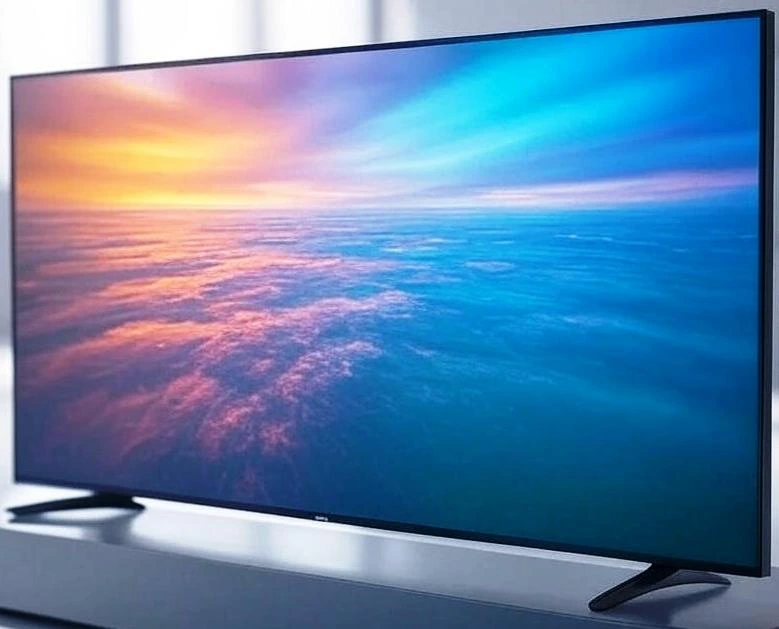The Ultimate Guide to LED Display Materials: Components, Innovations, and Beyond
Published: 30 Apr 2025
🌍 LED Display Materials: The Building Blocks of Brighter, Smarter Screens
LED displays are marvels of modern engineering, but their brilliance hinges on the materials and components that bring them to life. This guide unpacks LED panel materials, display components, and material innovations that define durability, clarity, and efficiency. Whether you’re a tech enthusiast or a professional, let’s illuminate the science behind the screens! 💡
🧩 Section 1: Core LED Panel Materials
1.1 Substrates: The Foundation of LED Panels
The substrate is the backbone of any LED display. Common types include:
- FR-4 Fiberglass: Rigid, cost-effective, and widely used for indoor screens.
- Aluminum-Based PCBs: Ideal for high-power LEDs (e.g., outdoor billboards) due to superior heat dissipation.
- Flexible Polyimide: Enables bendable displays for curved installations (e.g., stage backdrops).
Pro Tip:
Aluminum substrates can reduce thermal resistance by 50% compared to FR-4, extending LED lifespan.
1.2 LED Chips: The Light Emitters
- Gallium Nitride (GaN): The standard for blue/green LEDs, offering high brightness and efficiency.
- Aluminum Gallium Indium Phosphide (AlGaInP): Used for red/yellow LEDs.
- Chip-on-Board (COB): Multiple LEDs mounted directly on the substrate, reducing gaps between pixels.
Innovation Alert:
Micro-LEDs (<100μm) use gallium arsenide (GaAs) for ultra-high pixel density in wearables.

1.3 Encapsulation Materials: Shielding the LEDs
- Epoxy Resin: Affordable but prone to yellowing under UV exposure.
- Silicone Gel: Heat-resistant and flexible, perfect for outdoor screens.
- Phosphor Coatings: Convert blue light to white or adjust color temperatures.
Case Study:
Samsung’s “The Wall” uses silicone encapsulation to withstand 10,000+ hours of 24/7 operation.
To read more led screen maintenance guide
1.4 Adhesives and Thermal Interface Materials (TIMs)
- Thermal Paste: Fills gaps between LEDs and heat sinks (e.g., Arctic Silver).
- Conductive Adhesives: Electrically bond components without soldering.
🔌 Section 2: Essential Display Components
2.1 Printed Circuit Boards (PCBs)
- Single-Layer PCBs: Basic designs for low-resolution displays.
- Multilayer PCBs: Up to 12 layers for complex circuits in 4K+ screens.
- Copper Thickness: 1–3 oz copper layers for optimal current handling.
Did You Know?
High-end displays use gold-plated traces to prevent oxidation and ensure signal integrity.
2.2 Drivers and Controllers
- Constant Current Drivers: Maintain uniform brightness across LEDs.
- T-Con Boards (Timing Controllers): Sync data transmission between modules.
Innovation:
TI’s DLP® technology integrates MEMS mirrors with LED drivers for cinematic color accuracy.
2.3 Optical Components
- Diffusers: Spread light evenly (e.g., PMMA sheets).
- Anti-Glare Coatings: Matte finishes for outdoor readability.
- Lenses: Focus light to enhance viewing angles (e.g., 160° wide-angle lenses).
2.4 Structural Materials
- Aluminum Frames: Lightweight yet durable for modular panels.
- Carbon Fiber: Used in ultra-thin, portable displays.
🚀 Section 3: Material Innovations Revolutionizing LED Displays
3.1 Flexible and Stretchable Substrates
- Graphene-Based Substrates: Conduct electricity while bending 180°+ (used in foldable phones).
- Elastomeric Polymers: Stretchable circuits for wearable health monitors.
Example:
LG’s 65-inch OLED TV rolls into a base using a flexible polymer substrate.
3.2 Nano-Coatings for Enhanced Durability
- Hydrophobic Coatings: Repel water and dust (e.g., outdoor billboards in rainy climates).
- Anti-Reflective Nano-Layers: Boost contrast by reducing ambient light glare.
Stat Alert:
Nano-coatings can improve outdoor display visibility by 40% in direct sunlight.
3.3 Quantum Dot Enhancements
- QD Color Converters: Replace traditional phosphors for purer red/green hues.
- Photoluminescent Films: Applied over blue LEDs to achieve 110% NTSC color gamut.
Brand Spotlight:
Sony’s Crystal LED uses quantum dots for Hollywood-grade color accuracy.
3.4 Eco-Friendly Materials
- Recyclable Aluminum: Panels with 95% post-consumer recycled content.
- Bio-Based Epoxies: Made from plant resins to reduce carbon footprints.
Innovation:
Samsung’s Eco-Remote is partly made from recycled LED display materials.
3.5 Self-Healing Materials
- Microcapsule Technology: Releases healing agents to fix minor scratches.
- Conductive Polymers: Reconnect broken circuits autonomously.
❓ FAQ: LED Display Materials
Q1: What’s the difference between SMD and COB LEDs?
A: SMD (Surface-Mounted Device) LEDs are individual units soldered onto PCBs, while COB (Chip-on-Board) packs multiple LEDs under a single coating for seamless visuals.
Q2: Can LED displays work in extreme temperatures?
A: Yes! Screens with silicone encapsulation and aluminum PCBs operate in -30°C to 70°C ranges.
Q3: How do materials affect display lifespan?
A: High-quality substrates and encapsulation prevent yellowing/corrosion, extending life to 100,000+ hours.
Q4: Are there biodegradable LED materials?
A: Emerging bio-based PCBs and adhesives aim to reduce e-waste, but mainstream adoption is limited.
Q5: Why are Micro-LEDs expensive?
A: Precision placement of micron-scale LEDs requires advanced robotics and defect-free substrates.
🏁 Conclusion
From rugged aluminum PCBs to self-healing nanocoatings, LED display materials are the unsung heroes behind vibrant, long-lasting screens. As innovations like quantum dots and graphene push boundaries, the future promises thinner, greener, and more adaptable displays. Whether you’re designing a billboard or buying a TV, understanding these materials empowers smarter choices-and a deeper appreciation for the tech lighting up our world.
🔧 Stay Ahead:-
Bookmark this guide to navigate the evolving landscape of LED materials!

- Be Respectful
- Stay Relevant
- Stay Positive
- True Feedback
- Encourage Discussion
- Avoid Spamming
- No Fake News
- Don't Copy-Paste
- No Personal Attacks



- Be Respectful
- Stay Relevant
- Stay Positive
- True Feedback
- Encourage Discussion
- Avoid Spamming
- No Fake News
- Don't Copy-Paste
- No Personal Attacks





